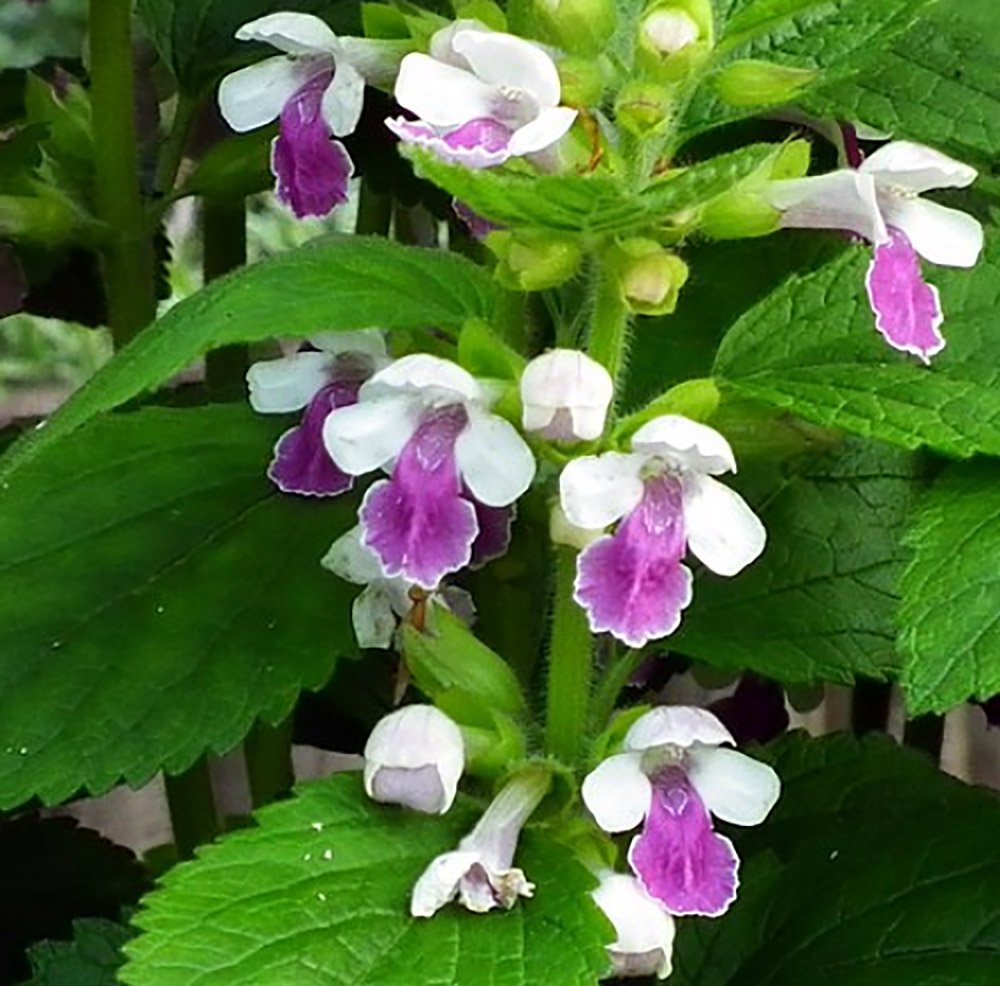Melittis Royal Velvet Distinction Large 3L Pot
Bastard Balm
Bastard balm is a wonderful garden perennial and deserves to be more widely grown. Every year the clumps slowly increase, throwing up solid little stems clothed with softly hairy leaves. In the axil of each leaf, several flowers are produced, ivory white with that distinctive pink tongue. This makes them look almost orchid like and acts as a landing guide for bees, who love the nectar deep inside each flower. The variety 'Royal Velvet Distinction' has the best markings. It will self-seed very gently around the garden and these plants sometimes have paler markings, or even pure white flowers.
In the wild, bastard balm is an uncommon plant, found only in south west England, the New Forest and south west Wales. It grows in ancient woodland and old hedgebanks where it finds a spot in dappled shade. It has been lost from many sites where coppicing no longer takes place or where the flail has replaced hedge laying. When these practices are restored, as Plantlife has been doing at sites in south Wales, it can quickly return.
Bastard Balm
Bastard balm is a wonderful garden perennial and deserves to be more widely grown. Every year the clumps slowly increase, throwing up solid little stems clothed with softly hairy leaves. In the axil of each leaf, several flowers are produced, ivory white with that distinctive pink tongue. This makes them look almost orchid like and acts as a landing guide for bees, who love the nectar deep inside each flower. The variety 'Royal Velvet Distinction' has the best markings. It will self-seed very gently around the garden and these plants sometimes have paler markings, or even pure white flowers.
In the wild, bastard balm is an uncommon plant, found only in south west England, the New Forest and south west Wales. It grows in ancient woodland and old hedgebanks where it finds a spot in dappled shade. It has been lost from many sites where coppicing no longer takes place or where the flail has replaced hedge laying. When these practices are restored, as Plantlife has been doing at sites in south Wales, it can quickly return.
Bastard Balm
Bastard balm is a wonderful garden perennial and deserves to be more widely grown. Every year the clumps slowly increase, throwing up solid little stems clothed with softly hairy leaves. In the axil of each leaf, several flowers are produced, ivory white with that distinctive pink tongue. This makes them look almost orchid like and acts as a landing guide for bees, who love the nectar deep inside each flower. The variety 'Royal Velvet Distinction' has the best markings. It will self-seed very gently around the garden and these plants sometimes have paler markings, or even pure white flowers.
In the wild, bastard balm is an uncommon plant, found only in south west England, the New Forest and south west Wales. It grows in ancient woodland and old hedgebanks where it finds a spot in dappled shade. It has been lost from many sites where coppicing no longer takes place or where the flail has replaced hedge laying. When these practices are restored, as Plantlife has been doing at sites in south Wales, it can quickly return.

















